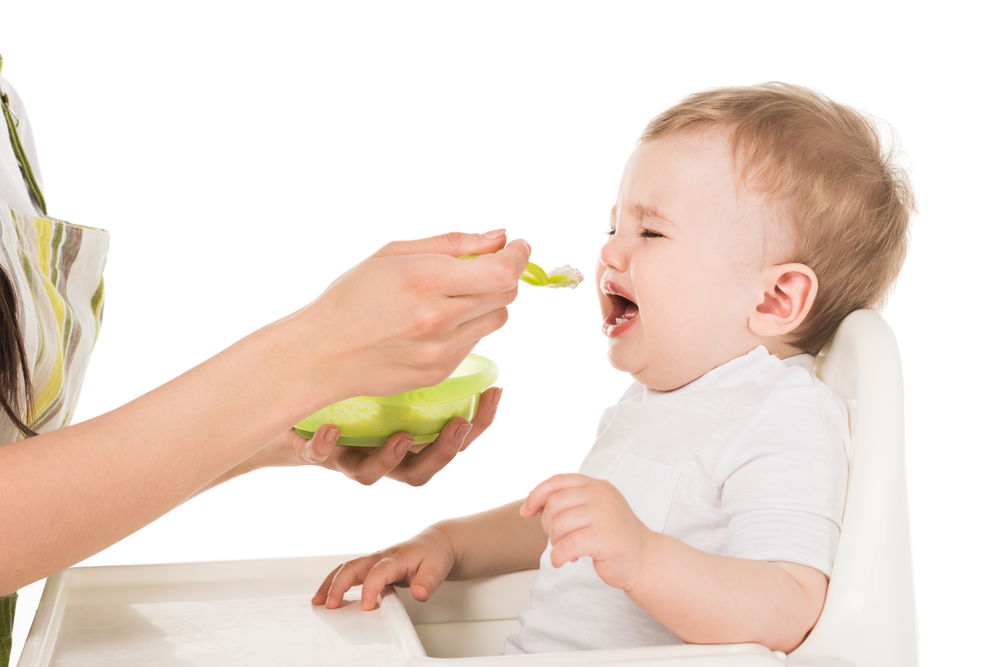You may have seen this viral video or this one recently! Did you know it is part of a trend in the US? It is the latest technique some parents have come up with to make kids eat. Professionals and children advocates around the world have been critical of using what equates to a form of abuse to frighten children into eating.
Parents can be desperate to get their kids to eat. If you are the parent of an extreme fussy eater, then you know the stress, the anguish as you put the food on the table. What happens then? A tantrum, a complete meltdown? A child who would rather starve than eat what you have offered? And perhaps you have already given up; perhaps you have had enough—always throwing food away, tussling with your kid, arguing with your partner. It’s just too hard so you serve whatever your child will eat.
The parents featured in the video must have been desperate to come up with such a strategy: they offer a spoon of food to their child who refuses to eat. Then they use a soft toy to mimic the child’s refusal. As the toy ‘refuses’ the food the parent punches the toy repeatedly in plain sight of their child. They then re offer the spoon to the child, who seems to have got the message and complies with eating. The parents are surprised to see the strategy work. They end up laughing, even mocking their child’s reaction, while he or she is still processing what has happened.
This practice is abusive and dangerous
I am certain these parents have no inclination to be violent with their child. Yet being violent to the child’s toy comes under the definition of emotional abuse. They may see the beating of the toy as harmless, but for their child it is real. Which is why the child complies and eats the food. The Australian government notes that when it comes to abuse, “beating up a toy says to the child: I don’t value what you value”[1]. Kids do not have to suffer physical violence to be traumatised, witnessing it is enough. Toddlers and children pay a lot of attention to their toys. D. Winnicott[2] was first to talk about toys as transitional or comfort objects which allow children to reduce stress.
This practice will increase stress levels associated with mealtimes
Frightening children triggers the freeze/fight/flight response. One can imagine that regular use of scare strategies will impact the child’s long-term ability to come to the dinner table feeling relaxed. Sitting at the dinner table may become associated with fear and distrust in the parents’ ability to manage mealtimes peacefully. Stress and anxiety levels are likely to be high. They will shut down appetite as hormones such as cortisol and adrenalin flood the body. When this happens, parents will find it more and more difficult to manage children at mealtimes and get them to eat specific foods. Down the track these children may carry food-related trauma into their teenage and adult years thereby complicating eating for the rest of their lives. If they learn throughout childhood that challenging foods are frightening, they will grow up with a limited range of accepted foods and eating habits that may affect their health and well-being.
The dinner table can provide security and love instead
I recommend to all the families I work with to take a long-term approach to feeding. Once we realise long-term outcomes are far more important than short-term gains, we can seek to provide:
-
Security
Providing food on the table at specific, expected times gives children a sense of security around eating. Having a routine and some rules allows children to thrive within boundaries. Children can be told that food is coming, when or at what time, but they are not to decide what foods are served because this is utterly confusing to them. However they can be involved in getting the food ready from shop to table.
-
Love
We may feel rejected when we put love into cooking food that is refused. However, there is love in welcoming children to the table regardless of whether today they will taste or like the food we have chosen to serve. Children need us to keep an open mind: they are learning about foods, they are learning about sitting down, they are learning about sharing food with the rest of the family, they are developing their skills with utensils and cutlery. This is a long process and as parents we can give ourselves and our children the time that is needed to learn.
Security and love are two basic needs that can be met at the dinner table. The dinner table provides a place for the family to meet, get to know each other, share food and thrive. Let’s not waste the opportunity it presents. Today, write down your long term goals for your family dinners.
Are you struggling with a child who is fussy about food? Would you rather raise a confident eater?
Call me on 0421843038 if you want to make your family fussy-eater free.
[1] NCPC Issues No. 8 — September 1997
Emotional abuse: The hidden form of maltreatment
Adam M. Tomison and Joe Tucci,
[2] Pediatr Med Chir. 2003 Mar-Apr;25(2):106-12.
W. D. Winnicott and the transitional object in infancy
https://www.ncbi.nlm.nih.gov/pubmed/12916436 Dell’Orto S1, Caruso E.
You may also like to read:









